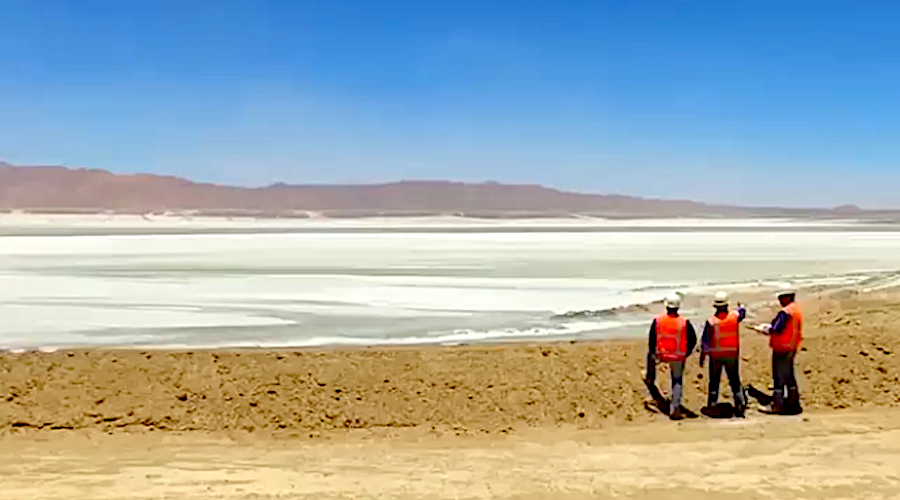Michael Sainato - TODAY - The Guardian
Roger Reinhardt works third shift at a beer production facility in Michigan from 10pm-8am, four days a week. He initially started working nights because it was the only shift available when he started working but he has continued doing it for the extra pay.

Photograph: Damian Dovarganes/AP
But is not not easy.
“It all comes down to sleep. Blackout curtains, white noise and melatonin supplements only do so much. The body rebels. When I’m not going great, I wake up every 90 minutes to two hours and might go through most days of the week with only four hours of sleep,” said Reinhardt. “The shift is killing us all slowly.”
He noted the shift has a lot of employee turnover because of people either not capable or willing to sacrifice daylight hours for the sleep they need, and needing to sleep during the day makes social events, chores, and errands a lot more difficult.
“Almost universally across the board, the job is taken because the worker either didn’t have another job available to them or they needed the money, or both,” added Reinhardt.
Millions of workers in the US work throughout the night, from workers in emergency services, such as paramedics, nurses, police officers, to late night hospitality, retail and food service workers, transportation and utility workers, and workers in factories and warehouses producing or distributing goods 24 hours a day.
The majority of US workers are on the job during the day, on 9am-5pm schedules or a few hours before or after, But about 5 to 10% are on their job through late night hours, with a portion of regularly working night shifts to workers with rotating night shift schedules.
The impacts of these late night work schedules can be profound on the health of workers and their ability to balance a life outside of work.
An Amazon worker in Washington who requested to remain anonymous has been working part-time on the overnight shift, Monday through Friday from 9.45pm and gets off around 2 to 2.30am. She has done it for about a year, because it enables her to avoid the cost of childcare and she gets time to spend with her children.
“It can get very exhausting since you’re not getting the adequate amount of sleep you need as a healthy adult. I only get four hours of sleep every night and try to sneak in a nap during the day. Some days I feel like I’m in a daze,” she said. “I do get paid $1.50 extra an hour so basically you’ll only make six dollars extra for that shift.”
Humans have a 24-hour circadian timing system, a biological clock, affecting physiological processes such as sleep patterns, eating habits and digestion, hormones, blood pressure and body temperature.
“It evolved to help organisms cope with the daily changes in their environment. Our body is exposed to very different conditions during the day and the night: during the day we normally eat, we move, and we’re alert, while during the night we sleep, we rest, and we recover,” said Dr Laura Kervezee, a chronobiologist at Leiden University Medical Center in the Netherlands.
“Night shift work turns it upside down. It leads people to be awake and consume food at times that their physiology is primed for sleep and rest. This leads to what we call circadian misalignment, where behavior becomes uncoupled with the circadian rhythms in the body.”
Numerous studies have demonstrated increased health risks for night shift workers in the long term, as their work schedules misalign their circadian timing systems, including higher risks of cardiovascular disease, Type 2 diabetes, obesity, cancer, depression, and short term impacts such as decreased cognitive performance, fatigue, and sleep deprivation.
“As a society, we should really think about whether that’s really where we want to go, to expose people to an extra health risk just because we want our package to arrive faster,” added Dr Kervezee, noting there is still research needed to be done to pinpoint the link between the short-term acute effects and the long-term health problems that night shift workers experience.
A warehouse worker on the third shift at UPS in Kentucky who requested to remain anonymous, explained the mental and physical drain the shift has had on them. They work from 10pm to 4am or later, receiving a higher hourly wage for working the third shift.
“Working third shift is really hard. It’s very mentally draining and people around you tend to be grumpier to work around, because everyone would rather be in bed,” they said.
They explained getting adequate sleep is difficult because of the noise and light during the day and they rarely have the time or energy to spend time with family or friends on work days.
Kennedy Sparr works the night shift as a 911 emergency dispatcher in Michigan, working from 6pm to 6am, often more than 40 hours a week. It’s not uncommon for her to be up 36 hours at a time before sleeping.
“It’s definitely harder to train your body to work the night shift, because your body is not used to staying up all night,” said Sparr. “I noticed at the times that I work night shifts, you’re more edgy, you have more of an attitude, you’re angry, you’re tired, you’re exhausted, and you feel drained.”
She explained that she often doesn’t sleep enough and the night shift schedule makes it difficult to maintain relationships with everyone else on normal schedules, and then adapting and retraining your body between day schedules on days off and vacations to going back to work nights.
“I don’t think there are ever nights that I feel fully refreshed when I come back to work, because I’ve had four hours of sleep and nothing’s done at home. I need to do things like laundry, I need to do the dishes. But I just wanted to sleep.”























